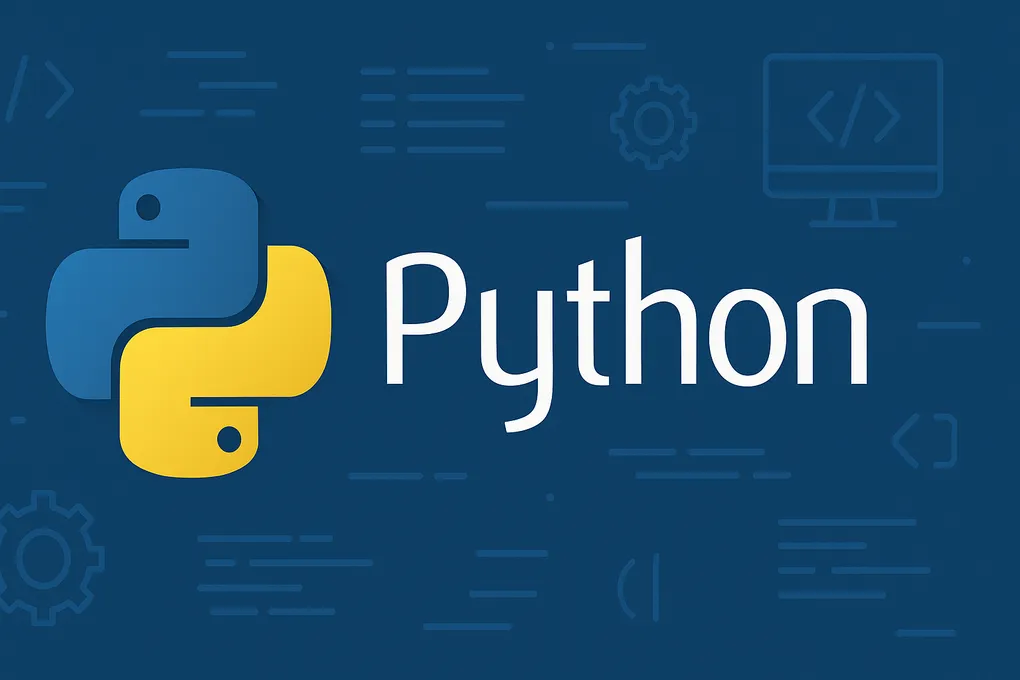
Video Supercut: Automatic Cuts From Speech With Whisper
A Python tool that extracts audio, detects speech, transcribes, removes repeats, and renders a concise edit
Cutting dead air and repeated phrases by hand is slow. This project automates the boring parts. Point it at a folder of videos, and it will:
- extract audio
- detect speech segments
- transcribe with Whisper
- remove duplicate phrases
- stitch the speaking parts together
- normalize audio and save a final edit
The result is a tighter supercut, ready for review or publication.
Quickstart
From the README:
git clone git@github.com:justinkahrs/video-supercut.git
cd video-supercut
python3 -m venv venv
source ./venv/bin/activate
pip install -r requirements.txtAdd your raw videos, then run:
mkdir raw
# place .mp4 or .mkv files in ./raw
python3 main.pyThe edited outputs will appear in edited_videos/.
Configuration
You can tune behavior through environment variables and constants:
NOISEcontrols silence threshold calibration. Acceptslow,medium, orhigh.MIN_SPEECH_DURATIONsets the minimum silence length for detection.MARGIN_DURATIONadds padding around detected segments.RAW_FOLDERandEDITED_FOLDERset input and output directories.
Relevant defaults in main.py:
NOISE_SETTING = os.environ.get("NOISE", "medium")
NOISE_OFFSET_MAP = {
"low": 5,
"medium": 10,
"high": 15
}
MIN_SPEECH_DURATION = 500 # ms
MARGIN_DURATION = 200 # ms
RAW_FOLDER = "raw"
EDITED_FOLDER = "edited_videos"How it works
1) Extract audio with ffmpeg
Video audio is extracted to a temporary WAV file. This keeps the pipeline fast and simple.
def process_video(video_file: str) -> str:
base_name = os.path.basename(os.path.splitext(video_file)[0])
audio_output = os.path.join(tempfile.gettempdir(), f"{base_name}_temp_audio.wav")
(
ffmpeg
.input(video_file)
.output(audio_output, format='wav', acodec='pcm_s16le', ac=1, ar='16k')
.overwrite_output()
.run(quiet=True)
)
return audio_output2) Detect speech segments by inverting silence
Silence is detected with pydub. The global dBFS plus a noise offset sets the threshold. We then invert the silent ranges to get speech.
def detect_speech_segments(audio_path: str):
audio = AudioSegment.from_wav(audio_path)
overall_dBFS = audio.dBFS
offset = NOISE_OFFSET_MAP.get(NOISE_SETTING, 10)
computed_threshold = overall_dBFS - offset
silent_ranges = silence.detect_silence(
audio,
min_silence_len=MIN_SPEECH_DURATION,
silence_thresh=computed_threshold
)
if not silent_ranges:
return [(0, len(audio))]
speech_segments, prev_end = [], 0
for (sil_start, sil_end) in silent_ranges:
if sil_start - prev_end > 0:
speech_segments.append((prev_end, sil_start))
prev_end = sil_end
if prev_end < len(audio):
speech_segments.append((prev_end, len(audio)))
speech_segments_with_margin = []
for (start, end) in speech_segments:
start = max(0, start - MARGIN_DURATION)
end = min(len(audio), end + MARGIN_DURATION)
speech_segments_with_margin.append((start, end))
return speech_segments_with_margin3) Transcribe segments with Whisper
Each segment becomes a mini WAV and is passed to Whisper. This is reliable and keeps memory usage predictable.
def transcribe_segments(audio_path: str, segments):
model = whisper.load_model("base")
audio = AudioSegment.from_wav(audio_path)
transcriptions = []
for (start, end) in segments:
segment_audio = audio[start:end]
segment_path = os.path.join(tempfile.gettempdir(), "temp_segment.wav")
segment_audio.export(segment_path, format="wav")
result = model.transcribe(segment_path, fp16=False)
text = result.get("text", "").strip()
transcriptions.append(text)
if os.path.exists(segment_path):
os.remove(segment_path)
return transcriptions4) Remove duplicate phrases
If you repeat yourself, only the last occurrence is kept. This often tightens rambly takes.
def remove_duplicate_phrases(transcriptions):
filtered, seen_phrases = [], set()
for i in range(len(transcriptions) - 1, -1, -1):
if transcriptions[i] not in seen_phrases:
seen_phrases.add(transcriptions[i])
filtered.append(transcriptions[i])
filtered.reverse()
return filtered5) Build a cleaned transcript with timestamps
These records drive the video splices. They are also logged to a JSON file for inspection.
def generate_cleaned_transcript(filtered_transcriptions, segments):
cleaned = []
for (segment, text) in zip(segments, filtered_transcriptions):
start_ms, end_ms = segment
cleaned.append({"start_ms": start_ms, "end_ms": end_ms, "text": text})
transcript_path = os.path.join(tempfile.gettempdir(), "cleaned_transcript.json")
with open(transcript_path, "w", encoding="utf-8") as f:
json.dump(cleaned, f, ensure_ascii=False, indent=2)
return cleaned6) Splice video to only the speaking parts
moviepy subclips each speech region, then concatenates them.
def compile_final_video(video_file: str, cleaned_transcript):
clip = mp.VideoFileClip(video_file)
subclips = []
for entry in cleaned_transcript:
start_s = entry["start_ms"] / 1000.0
end_s = entry["end_ms"] / 1000.0
subclip = clip.subclip(start_s, end_s)
subclips.append(subclip)
if not subclips:
return None
final_clip = mp.concatenate_videoclips(subclips, method="compose")
return final_clip7) Normalize and save
An intermediate file is rendered, then ffmpeg loudness normalization produces the final output.
def save_output(final_clip, output_folder: str, original_video: str):
if not final_clip:
print(f"No segments found to compile for {original_video}. Skipping save.")
return
Path(output_folder).mkdir(parents=True, exist_ok=True)
base_name = os.path.basename(original_video)
edited_output_path = os.path.join(output_folder, f"edited_{base_name}")
if os.path.exists(edited_output_path):
os.remove(edited_output_path)
final_clip.write_videofile(edited_output_path, codec="libx264", audio_codec="aac")
final_output_path = os.path.join(output_folder, f"final_{base_name}")
if os.path.exists(final_output_path):
os.remove(final_output_path)
normalize_cmd = f"ffmpeg -y -i \"{edited_output_path}\" -af loudnorm \"{final_output_path}\""
print(f"Normalizing audio: {normalize_cmd}")
subprocess.run(normalize_cmd, shell=True, check=True)
print(f"Saved normalized video to: {final_output_path}")
if os.path.exists(edited_output_path):
os.remove(edited_output_path)
print(f"Removed intermediate file: {edited_output_path}")Parallel processing and prerequisites
The script will try to locate ffmpeg. If it is missing, it falls back to imageio-ffmpeg when available. Files are processed in parallel with a ProcessPoolExecutor.
def main():
import shutil
from concurrent.futures import ProcessPoolExecutor
if not shutil.which("ffmpeg"):
try:
import imageio_ffmpeg
ffmpeg_path = imageio_ffmpeg.get_ffmpeg_exe()
os.environ["FFMPEG_BINARY"] = ffmpeg_path
print("ffmpeg not found in PATH, using imageio-ffmpeg at", ffmpeg_path)
except ImportError:
print("ffmpeg not found and imageio-ffmpeg not installed. Please install ffmpeg.")
return
Path(EDITED_FOLDER).mkdir(parents=True, exist_ok=True)
video_files = glob.glob(os.path.join(RAW_FOLDER, "*.mp4")) + glob.glob(os.path.join(RAW_FOLDER, "*.mkv"))
if not video_files:
print(f"No .mp4 or .mkv files found in '{RAW_FOLDER}' folder.")
return
with ProcessPoolExecutor() as executor:
executor.map(process_single_video, video_files)Tips
- Start with
NOISE=medium. If you see chatter cutting off, trylow. If silence detection misses pauses, tryhigh. - Tweak
MARGIN_DURATIONto avoid clipping the first or last syllable of a sentence. - Whisper models vary in accuracy and speed. You can swap
baseforsmallormediuminwhisper.load_model. - The JSON transcript in your temp directory is handy for debugging cuts.
Closing
Video Supercut aims to make editing feel lighter. It does not invent content. It just helps you keep the parts that matter. Point it at a folder, grab a coffee, and you will come back to tighter takes that respect your voice.